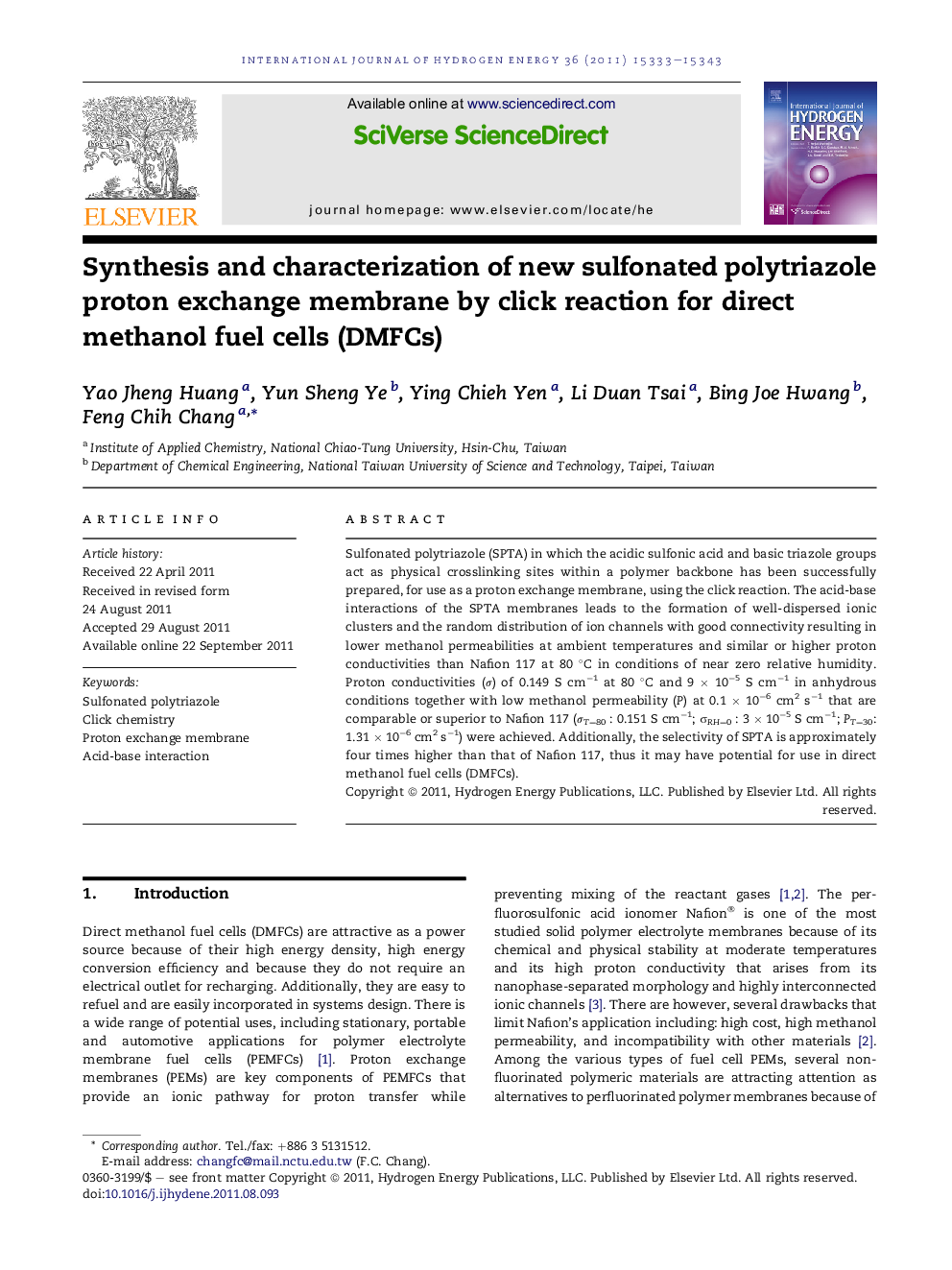| کد مقاله | کد نشریه | سال انتشار | مقاله انگلیسی | نسخه تمام متن |
|---|---|---|---|---|
| 1271827 | 1497570 | 2011 | 11 صفحه PDF | دانلود رایگان |

Sulfonated polytriazole (SPTA) in which the acidic sulfonic acid and basic triazole groups act as physical crosslinking sites within a polymer backbone has been successfully prepared, for use as a proton exchange membrane, using the click reaction. The acid-base interactions of the SPTA membranes leads to the formation of well-dispersed ionic clusters and the random distribution of ion channels with good connectivity resulting in lower methanol permeabilities at ambient temperatures and similar or higher proton conductivities than Nafion 117 at 80 °C in conditions of near zero relative humidity. Proton conductivities (σ) of 0.149 S cm−1 at 80 °C and 9 × 10−5 S cm−1 in anhydrous conditions together with low methanol permeability (P) at 0.1 × 10−6 cm2 s−1 that are comparable or superior to Nafion 117 (σT=80 : 0.151 S cm−1; σRH=0 : 3 × 10−5 S cm−1; PT=30: 1.31 × 10−6 cm2 s−1) were achieved. Additionally, the selectivity of SPTA is approximately four times higher than that of Nafion 117, thus it may have potential for use in direct methanol fuel cells (DMFCs).
Incorporation of sulfonic acid (acidic) and triazole (basic) groups as physical crosslinking sites in polymer backbone lead to the formation of well-dispersed ionic clusters and random distribution of ion channels with good connectivity, resulting in membranes with lower methanol permeabilities at ambient temperatures and similar or higher proton conductivities than Nafion 117 at 80 °C in conditions of near zero relative humidity. SPTA membranes are capable of conducting protons under anhydrous conditions by Grotthuss mechanism of proton transfer.Figure optionsDownload as PowerPoint slideHighlights
► SPTA membranes have been prepared using the click reaction.
► Sulfonic acid and triazole groups as physical crosslinking sites in SPTA membranes.
► Acid-base interactions lead to the formation of well-dispersed ionic clusters.
► Acid-base interactions lead to the random distribution of ion channels.
► SPTA membranes conduct protons under anhydrous conditions by Grotthuss mechanism.
Journal: International Journal of Hydrogen Energy - Volume 36, Issue 23, November 2011, Pages 15333–15343